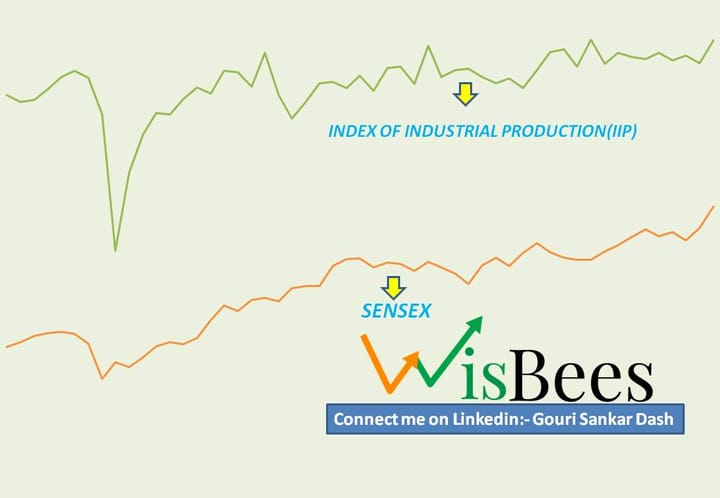I won a Lottery of 25Lakhs at the age of 28. Let's know how I allocated that into Different Mutual Funds.

Ahh, It sounds good that I have won a lot of Money. But you will be amazed to know the story after I won that giant Lottery.
When I was a child, I bought candies that used to cost me around 0.25 Paisa. But today, when I go and buy the same candy, that costs me 1Rs. I did my engineering with a fee of 4Lakhs for four years, and now the same college is increasing fees by 10% yearly. Honestly, I felt cheated, and for the first time, it really struck me hard to think about the value of my 25Lakhs after 30 years when I retire. How can I beat inflation? A friend of mine suggested investing in Markets and Mutual Funds. There started my investment journey, and I did so much research on allocating my money to different asset classes.
I choose to invest 70% in equity funds and 30% in Debt Mutual funds. But why did I do so?
When I thought of investing, the first thing that came to my mind was to invest in Fixed Deposits as any normal Indian guy would do. But the inflation rate in India has been fluctuating between 4% to 5%, and I get a 4%return in Bank FDs, which is not sufficient. The story doesn’t stop there; they are very tax-inefficient products too. I have to pay the tax on my fixed deposit earnings as per my current tax slab, which is 30%(my income is above 15Lakhs per annum).
So my Net earnings from the fixed deposit( Let’s say 4% is my FD return) will be
4*(1-0.30)= 2.8%.
So I thought instead of investing in FD, I could always invest in a similar safer instrument, that is, Liquid Mutual Funds, with better tax efficiency(20% tax with indexation benefit). Also, there is no lock-in period in Liquid Funds, and they can be withdrawn in 24 hours. So I had to prepare an Investment plan to create an efficient Portfolio that could generate inflation-beating Returns and a Healthy- Wealthy Retirement Plan.
I came across a prevalent theory called “Modern Portfolio Theory” by Harry Markowitz. That said, investors should diversify their portfolios with Negatively correlated Assets.
What are negatively Correlated Assets?
Negatively correlated assets mean the assets have opposite sensitivities, which means if one falls, another will rise to some degree. Equity funds and Gold are negatively correlated as also Equity funds and Debt funds. Historically it has been seen when you have Debt assets mixed with Equity Funds, the risk is reduced during the market fall and gives decent Returns when the Market goes up.
So I knew I had to play safe and build a portfolio with negatively Correlated assets, a mixture of equity and debt or equity and gold or all three. But I choose Equity and Debt because I get to trade Debt easily and can have some regular income from Debt funds. Now the bigger question was the right combination of Assets.
How did I choose the Right Combination for my Portfolio?
I used a popular strategy which is Age based Asset allocation method. Equity gives the highest return among all asset classes, but it is also the highest risky asset class. Debt funds are usually a very less risky asset class but also provides a lesser return compared to equity fund.
Both the asset class are not risk-free; equities can be as bad as the “Satyam” incident, and Debt securities can default as severely as the “ILFS” incident. So it is always wise to have a mix of Asset Classes.
A younger person can take more Risk so that he can have more equity funds in his portfolio, but an old retired person can’t have the same risk tolerance, so he has to allocate more towards Debt funds. So by the rule of Age based asset allocation, my equity allocation needed to be 72%( 100-My age. my age is 28yrs now) and the Debt component needed to be 28%. But I rounded the equity to 70% and Debt funds to 30%.
One can say this is some Aggressive strategy I followed; then they can have 60% towards Equity funds and 40% towards Debt funds. I believe more in the “Bharat Growth “ story. Our population is one of the World’s youngest populations, with below 28yrs of Average age, whose future earning potential will flow towards the Stock Market, and hence the Equity market may grow more.
Another Strategy
Although one can also dynamically allocate funds as per the market conditions either by
- Buying Hybrid Funds like Balanced advantage funds. Which shifts Equity and Debt as per the Market condition.
- Or by manually timing the market to allocate debt using Nifty valuation Ratios(PE or PB ratios). At a high PE ratio, allocate high debt and low equity and at a low PE ratio, allocate low debt funds and High equity funds.
In the below image from nifty-pe-ratio.com, you can see nifty is trading at a 20.59 PE multiple. This is lying in the median Zone. So according to the strategy, one can allocate 50-50 into equity and Debt funds. I don’t like to time the market and look for a long-term solution for retirement planning. So I used the Age based asset allocation strategy.
Are you still interested to know what funds I bought in Equity and Debt category?
I bought four Equity funds and three debt funds. I will show you better in a pie chart.
In my equity portfolio, I would like to have a Large Cap fund, a multi-cap and some amount of small-cap fund. Large-cap funds are generally stable, less volatile and give moderate returns. However, small-cap funds are risky and more volatile but generate more returns in the long-term time horizon.
In my debt portfolio, I have kept some money in the liquid fund that I can use in emergencies. It is better than a Bank Fixed deposit fund as there is no breakage fee, and I can withdraw at any point in time. Short-term funds also can be withdrawn in 6-12 months, which provides me with better liquidity. I also allocated some to corporate bond funds, which are a little risky but provide a better return.
I feel I have created a less risky, sound and perfect combination of the asset-class portfolio. Now you can create one for your savings and plan for your retirement accordingly.



